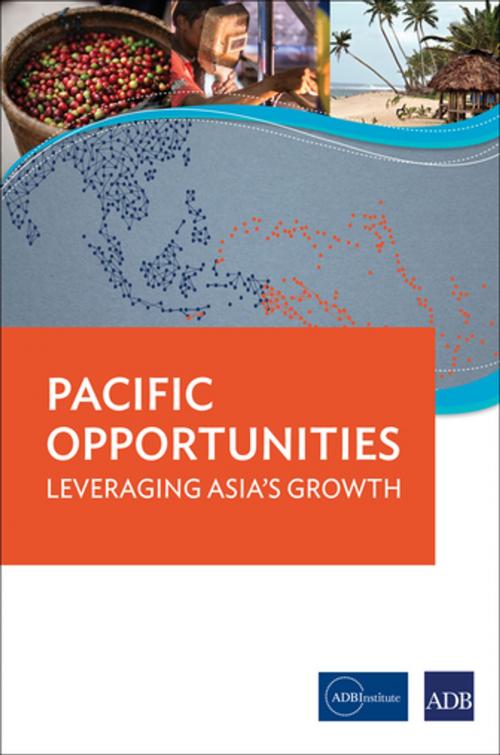Pacific Opportunities
Leveraging Asia's Growth
Business & Finance, Economics, International Economics| Author: | ADB, ADBI | ISBN: | 9789292549909 |
| Publisher: | Brookings Institution Press | Publication: | March 8, 2016 |
| Imprint: | Asian Development Bank Institute | Language: | English |
| Author: | ADB, ADBI |
| ISBN: | 9789292549909 |
| Publisher: | Brookings Institution Press |
| Publication: | March 8, 2016 |
| Imprint: | Asian Development Bank Institute |
| Language: | English |
Forecasts suggest that solid growth in Asia is likely to continue. By 2030, Asian economies are expected to be roughly four times larger than they are today, and Asia’s share of global output is expected to rise to 40% of the global total. In contrast, most countries in the Pacific have experienced extended periods of relatively low growth, and many have suffered significant setbacks from disasters.
This book analyzes and discerns some of the main trends driving economic relations between Asia and the Pacific. It aims to assess how the 14 Pacific developing member countries of the Asian Development Bank can better tap into opportunities arising from Asian growth, and explores how the economic and financial integration between Asia and the Pacific can be expanded to benefit both regions. Pacific Opportunities identifies critical constraints on integration and sets out policy reforms to address these constraints to mutually beneficial economic ties between the two regions.
These two very different regions have drawn closer economically over the past two decades as improvements in transport infrastructure and advances in information and communications technology have helped to bridge geographic distance.
Forecasts suggest that solid growth in Asia is likely to continue. By 2030, Asian economies are expected to be roughly four times larger than they are today, and Asia’s share of global output is expected to rise to 40% of the global total. In contrast, most countries in the Pacific have experienced extended periods of relatively low growth, and many have suffered significant setbacks from disasters.
This book analyzes and discerns some of the main trends driving economic relations between Asia and the Pacific. It aims to assess how the 14 Pacific developing member countries of the Asian Development Bank can better tap into opportunities arising from Asian growth, and explores how the economic and financial integration between Asia and the Pacific can be expanded to benefit both regions. Pacific Opportunities identifies critical constraints on integration and sets out policy reforms to address these constraints to mutually beneficial economic ties between the two regions.
These two very different regions have drawn closer economically over the past two decades as improvements in transport infrastructure and advances in information and communications technology have helped to bridge geographic distance.















